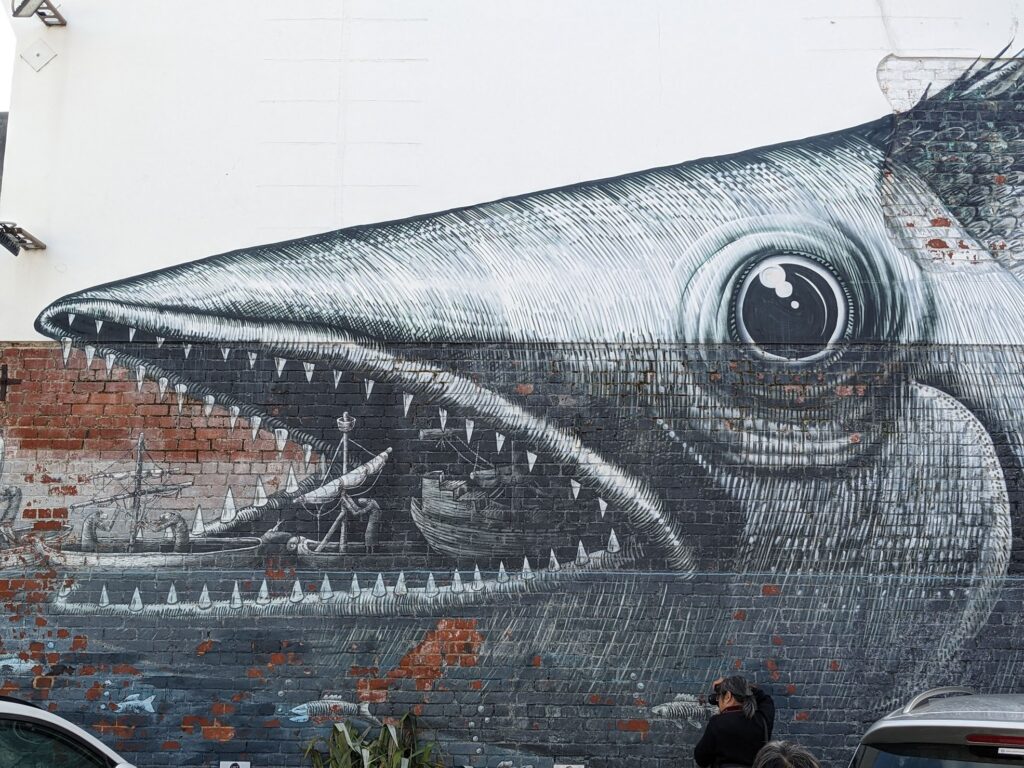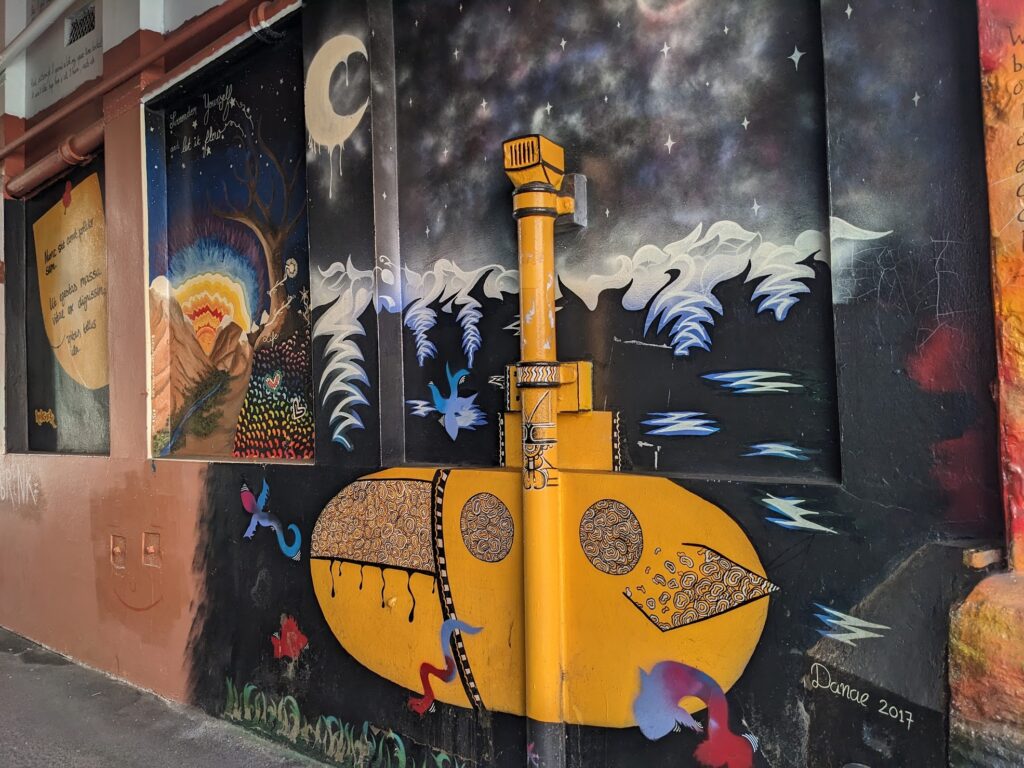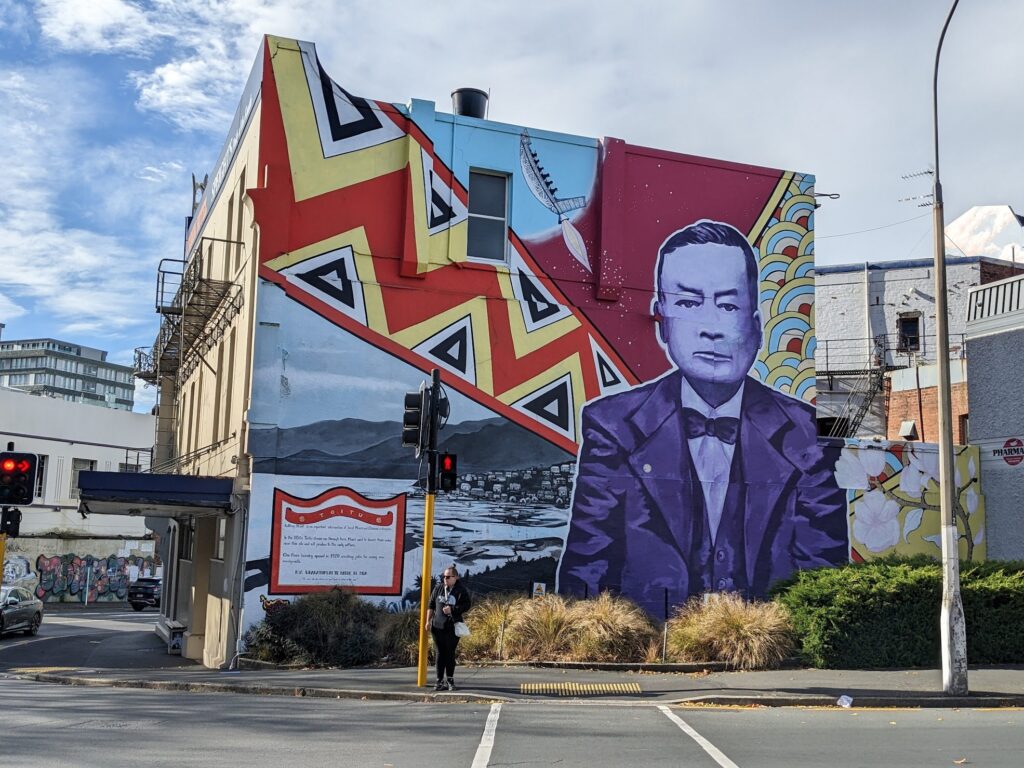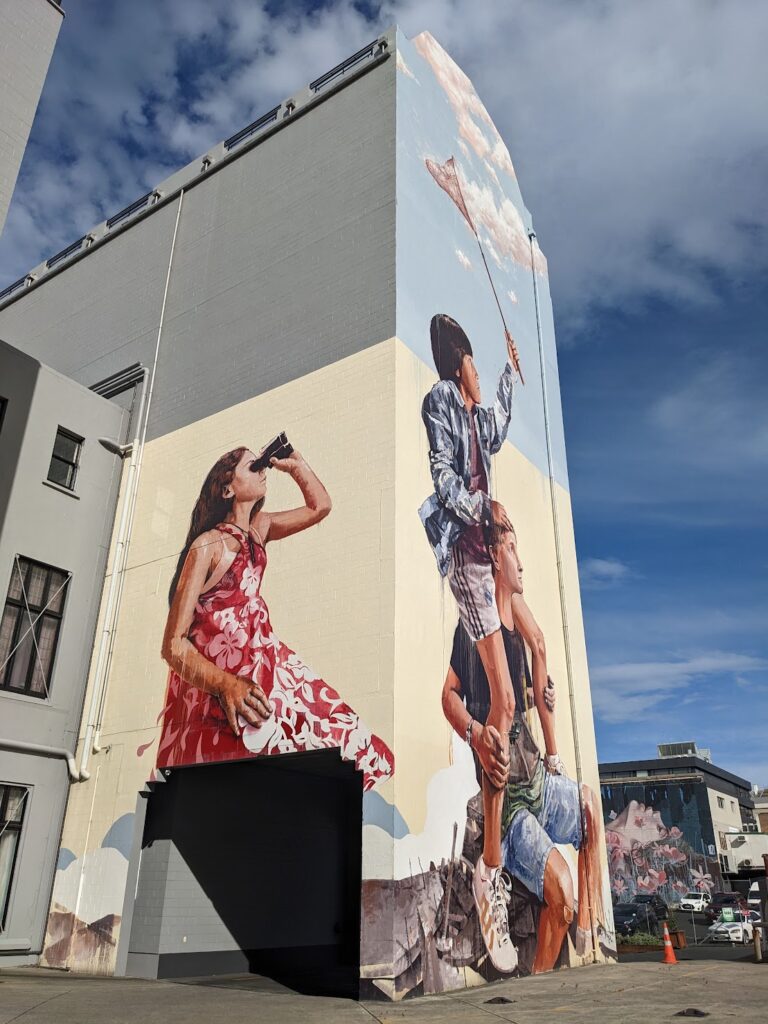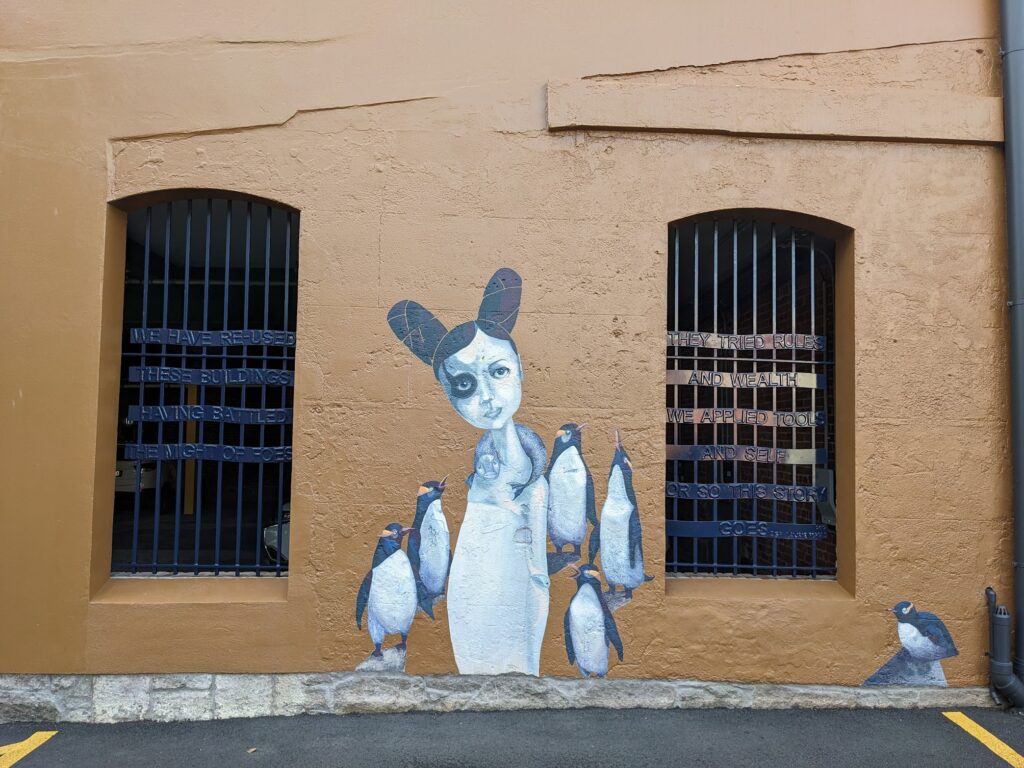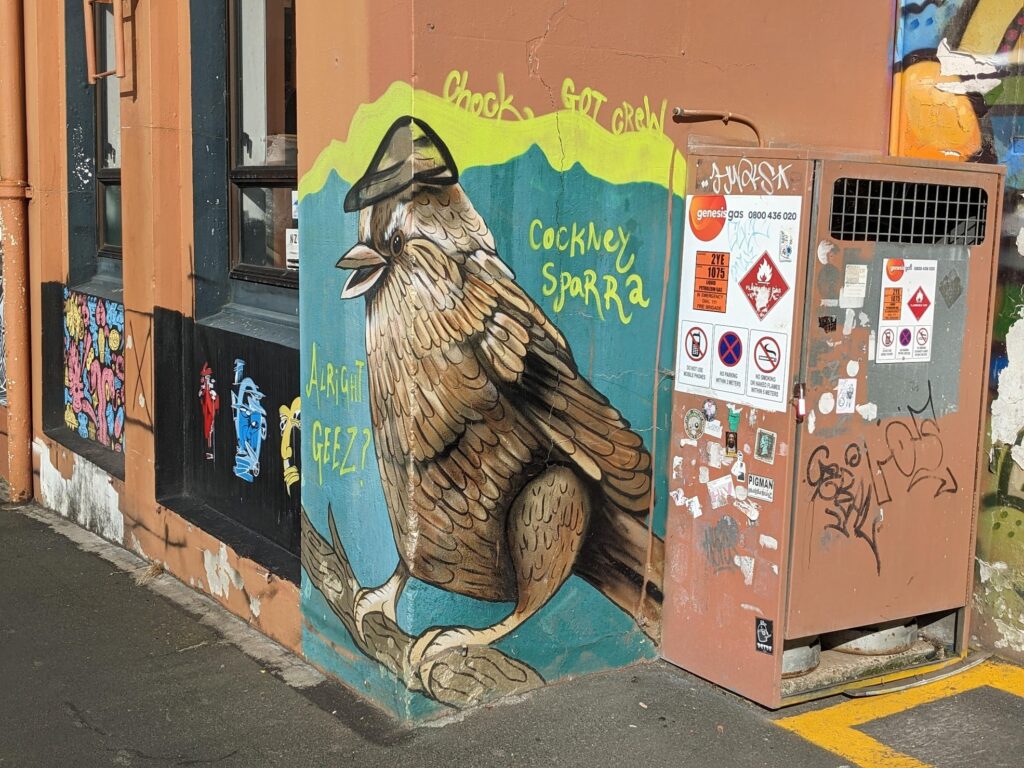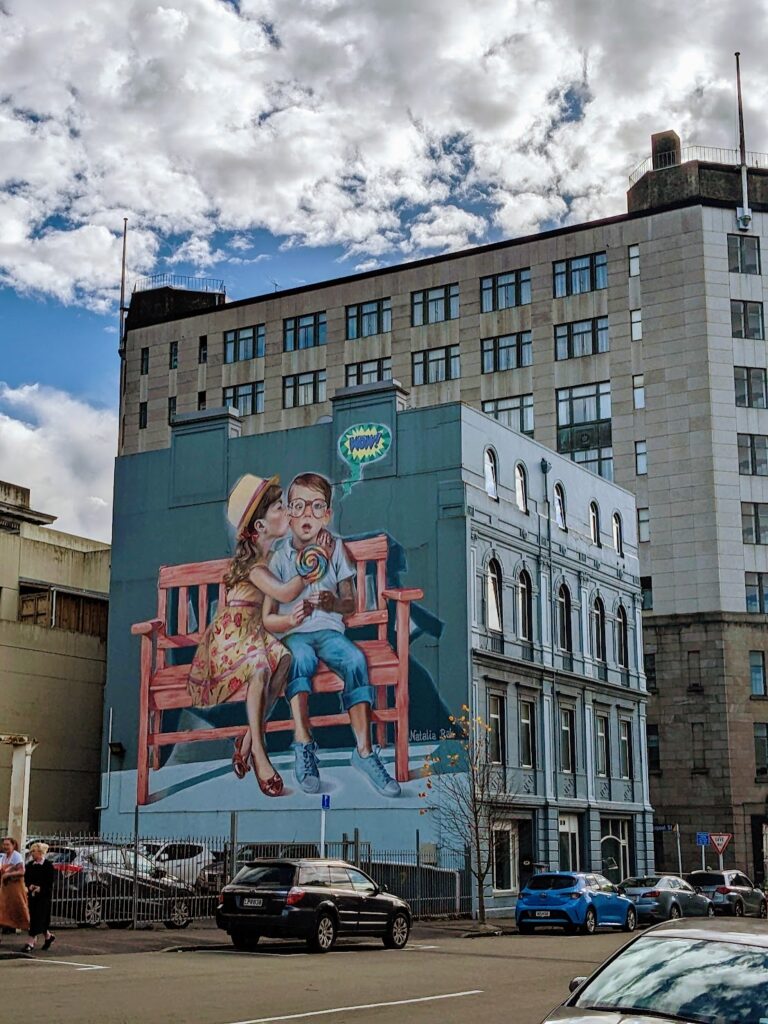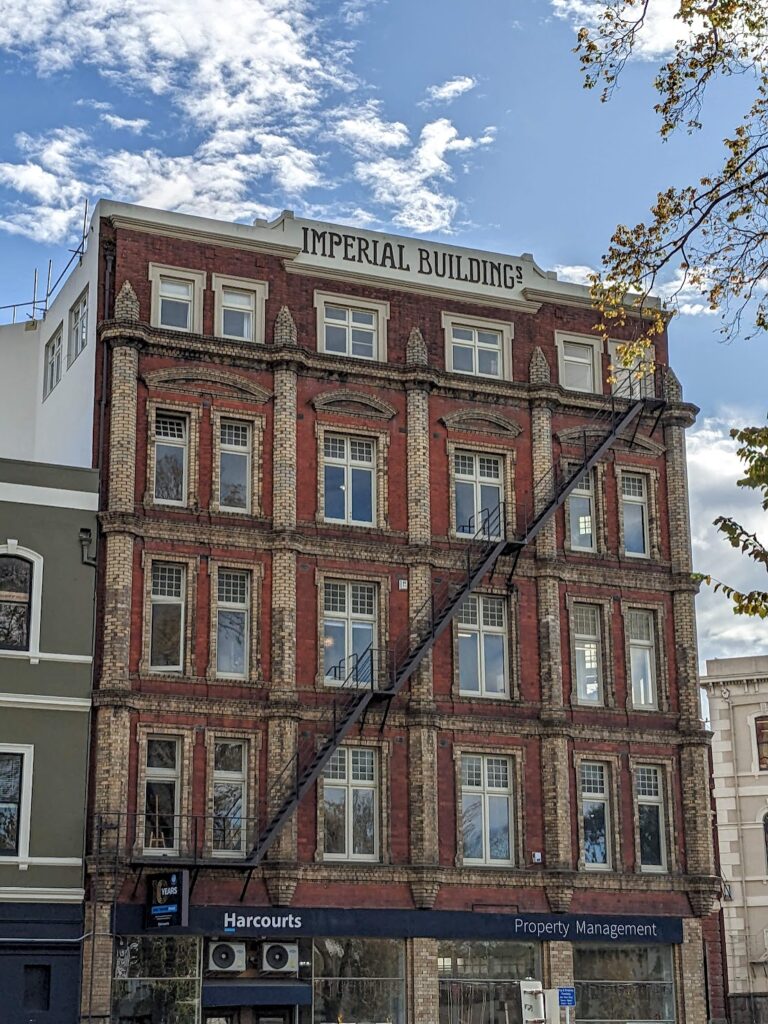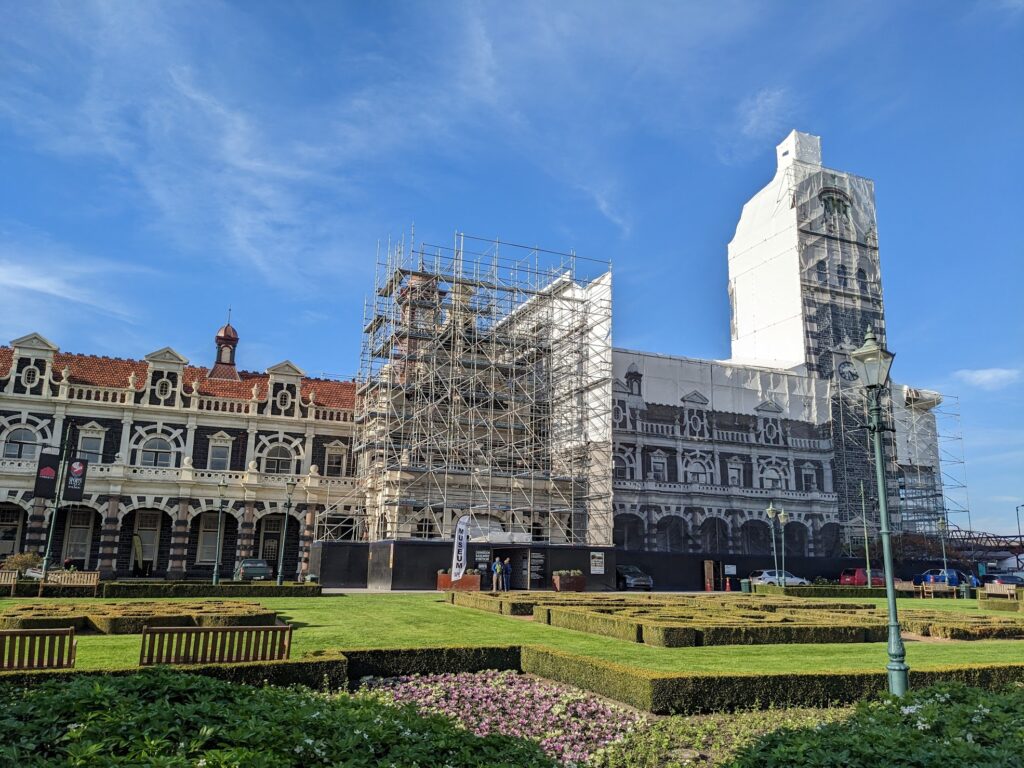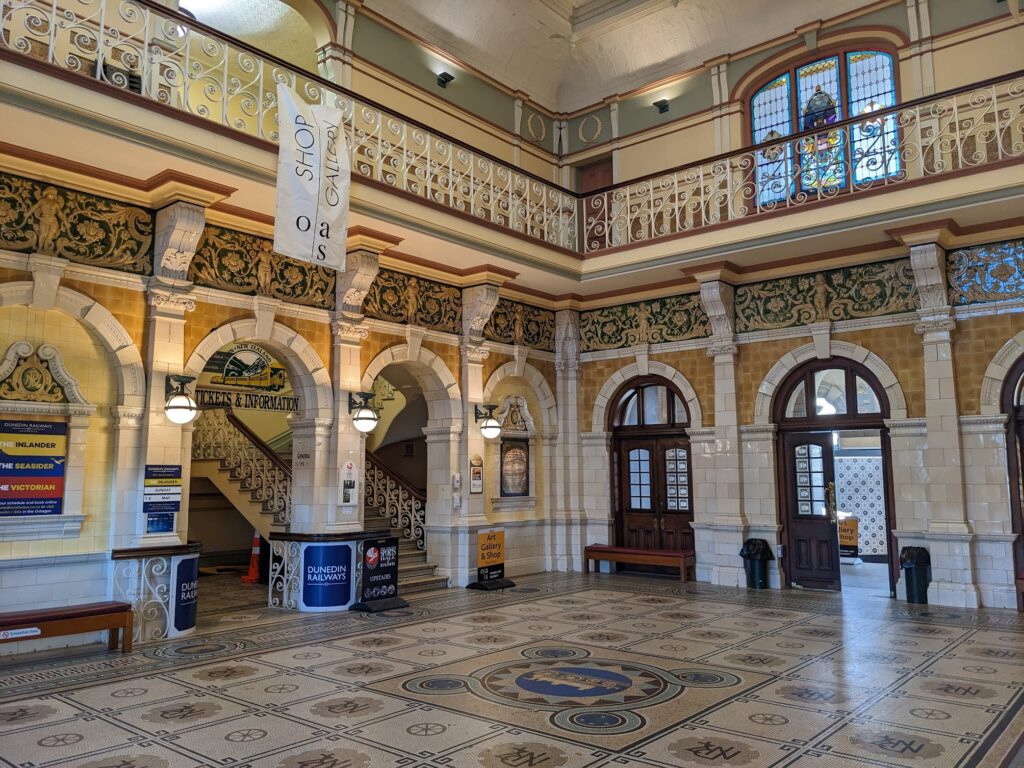After cycling the 152 km Otago Central Rail Trail, we took a transfer from Middlemarch to the city of Dunedin. We were pretty knackered by this point, and just about managed a takeaway pizza at our apartment before falling asleep.
With only 48 hours in Dunedin, we split our time between a road trip around the Otago Peninsula and a street art tour of downtown Dunedin.
Day 1: Wildlife spotting on the Otago Peninsula
We set off bright and early to pick up a hire car for a one-day mini road trip around the Otago Peninsula.
Our first stop was Tunnel Beach, which appeared to be plucked straight out of a Famous Five novel. We followed a track down from the cliff top towards the sea, before the path ended abruptly at a 72-step tunnel straight down through the rock to a hidden cove. Sara (our local Enid Blyton expert) deemed that this was almost certainly used by smugglers.



The sound of the waves crashing against the rocks echoed around the cliffs surrounding the cove, making the noise almost deafening. We enjoyed climbing onto the huge sandstone boulders, which had a few convenient steps carved into the sides to make for an easy ascent. As with so many things in New Zealand, it was both stunningly beautiful and almost empty.

That afternoon, we headed along the peninsula to Allans Beach, with the hope of spotting some sea lions. The drive along the coast was stunning, and the road signs confirmed that we were on the right track.


We traversed a couple of sand dunes and immediately spotted some sea lions snoozing on the beach (below left). Although they weren’t particularly energetic, we did catch them yawning, covering themselves with sand, and twitching their whiskers while dreaming. After a walk along the predictably gorgeous beach, we returned to the car to continue further along the peninsula, before spotting a handful more sea lions on the beach at Harington Point (below right). These were much more active, with a couple of males fighting for mating rights with the female sea lions nearby. We were particularly tickled by the group of females who weren’t at all impressed and slept through the whole altercation.


The last stop on our road trip was Taiaroa Head, where we were hoping to spot both Royal Albatrosses and Blue Penguins. We didn’t have to look very hard for the former though, as we spotted our first albatross even before getting out of the car and got a great view of many more as they flew right past the Waiwhakaheke Seabird Lookout. We later learned at the visitor centre that the Royal Albatross is the largest sea bird in the world, with an average wingspan of just over three metres. They looked absolutely majestic soaring effortlessly over the cliffs, and made seagulls look the size of a sparrow in comparison.
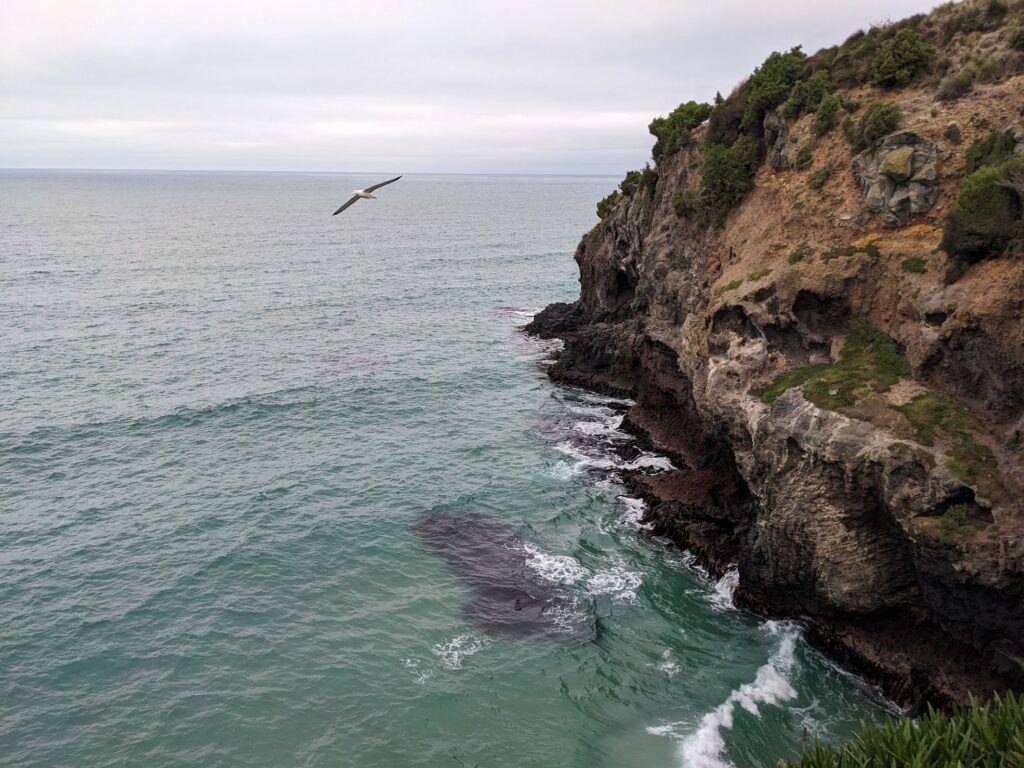
Last on the day’s itinerary was a trip down to a viewing platform on the beach to watch the Blue Penguins’ daily commute back from the sea to their burrows in the dunes. Making the dash across the beach is actually the riskiest part of their day, which is understandable given that they’re only about 32 cm tall on average. To mitigate the risk from predators, they collect together to form a tight group, which is delightfully known as a “waddle” of penguins. Once the group is large enough, they dash across the sand before splitting up to find their own burrows. When they reach the relative safety of the dunes and nearby burrows, the penguins stop for a chat and a rest, before turning in for the night. It all added up to make an insanely cute ritual, and somehow, we managed to prevent Sara from sneaking one into her backpack before finally returning to Dunedin.
Day 2: Street art walking tour in Dunedin
Having spent two nights in Dunedin but seen very little of it, we were keen to make the most of the morning before our departure. We were staying in an apartment on Dunedin’s “High Street”, which turned out to be named after its steep gradient more than its eating and drinking options. Still, it was absolutely surrounded by street art, where anything from tiny alleyways to huge buildings had been given a quirky facelift. I’m sure some of the art’s subtlety was lost on us, but we still very much enjoyed it at face value.
Dunedin boomed during the gold rush era of late 1800s, and in 1874 it surpassed Auckland to momentarily become New Zealand’s largest city. As a result of this influx of cash, Dunedin is home to plenty of beautiful municipal buildings and regional headquarters, many of which have been beautifully restored. The jewel in Dunedin’s crown is its train station, although today its handful of services are largely both weekly and seasonal. Upon arriving in Dunedin, our shuttle bus driver proudly announced that the city’s train station was one of the most photographed buildings in the Southern Hemisphere, which sounded only slightly more impressive than the record held by Picton’s Edwin Fox. Unfortunately, the station building was shrouded in scaffolding when we passed, but we still took a couple of photos to do our bit in maintaining its (definitely questionable) record.
Dunedin made it onto our itinerary largely as a jumping off point for the Otago Peninsula, but we were very glad to have lingered long enough to take in the city’s sights too. Next, we set our sights on the southernmost destination of our NZ adventure; the ecological reserve of Stewart Island.



